Rococo- Definition
Rococo, an artistic style originating in the early 18th century, is characterized by its exuberant and intricate ornamentation. So transitioning from the Baroque period, it emphasized pastel colors, curvaceous forms, and playful motifs. Rococo’s distinctiveness lies in its graceful and delicate aesthetics, making it a beloved and influential movement in art history.
Overview
Also, this article describes everything about it. But still, if you want to know more things about Rococo, then you should read our two categories– “Medieval- Western World” and “Renaissance- European.”
You would know these things in this article:- Characteristics, Southern Germany and Russia, Origin of the term..
So if you want to know more things (About its movement). Then check our- People also search for section.
A category such as “Medieval- Western World,” describes the various aspects, and Category “Renaissance- European” gives information about other things.
4 Frequently asked questions
1. Can you explain the history of Rococo?
Date of the emergence of this art movement is- 1730. “The Swing,” “The Blue Boy” (So-called artworks) define the history of this art style, these are Rococo artworks.
There are some artists such as Thomas Gainsborough, Jean Antoine Watteau, and Jean Honoré Fragonard who contributed to the renaissance of Rococo movement.
Paintings/artworks that are part of ROCOCO history.
Top 3 Artworks:-
The Swing:-
The Blue Boy:-
The Embarkation for Cythera:-
Top 5 Artists
1st Jean Antoine Watteau:-
Notable works:- The Ensign of Gersaint, 1720 & Embarkation for Cythera, 1717.
Qualification:- Italian comedy and ballet (French painter).
2nd Jean Honoré Fragonard:-
Notable works:- A Young Girl Reading & The Swing.
Qualification:- French Academy in Rome (French painter and printmaker).
3rd François Boucher:-
Notable works:- The Secret Message & Young Country Girl Dancing.
Qualification:- Academy of Painting and Sculpture (French painter, draughtsman and etcher).
4th Thomas Gainsborough:-
Notable works:- The Artist’s Daughters (1759) & The Blue Boy (1770).
Qualification:- British landscape school (English portrait and landscape painter).
5th Jean-Baptiste Siméon:-
Notable works:- The Ray, 1728 & Woman Cleaning Turnips, 1738.
Qualification:- Royal Academy (French painter).
2. What were some of the characteristics of the Rococo period?
Also the Rococo period, as described on Wikipedia, was a captivating artistic era with several distinguishing characteristics. So transitioning from the Baroque style, Rococo embraced a more lighthearted and decorative approach to art and design. Also delicate pastel colors, graceful curves, and intricate ornamentation became prominent features. Moreover, Rococo exuded a sense of playfulness and spontaneity, captivating audiences with its whimsical motifs and emphasis on the pleasures of life. So the movement’s charm extended beyond painting and sculpture, influencing architecture, furniture, and fashion. Also Embracing the love for nature, Rococo often incorporated natural motifs and pastoral scenes, evoking a sense of fantasy and escapism. So this unique blend of elegance and flamboyance made the Rococo period an essential chapter in the rich tapestry of art history.
3. Who would be considered the ‘Father’ of Rococo?
If you analyze the biography of Rococo artists and Rococo artworks, then you would get that there is no fixed answer to this question.
If you are the Rococo student, then you must have seen differences in paintings such as “Mr and Mrs Andrews,” “The Swing,” “The Embarkation for Cythera,” “The Triumph of Venus,” and “The Blue Boy.”
Along with it, if you analyze the biography of Rococo artists such as Jean-Baptiste Siméon, Jean Antoine Watteau, François Boucher, Thomas Gainsborough, and Jean Honoré Fragonard.
Then it would be very difficult to say.
Because, altogether, their contribution to the renaissance of Rococo movement is huge and these are counted among the elite class in its history.
That’s because there is no fixed answer.
4. What are some of the most expensive pieces of Rococo ever created?
JEAN ANTOINE WATTEAU is obviously number 1 its artist. So the artworks of this artist (“The Triumph of Venus,” and “The Blue Boy” including others) remain in high demand. So these artworks are counted in most expensive pieces of Rococo created.
Along with it, you may select our- Jean Antoine Watteau art-Top 25 designs, paintings, photos, prints, and sculptures.
Although, Thomas Gainsborough, François Boucher, and Jean Honoré Fragonard are also a very renowned name in this category. Their artworks are also very expensive.
Top 4 Famous Paintings
1. The Swing (painting)
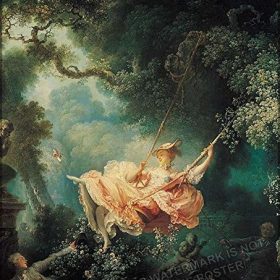
Artist: Jean-Honoré Fragonard
Location: The Wallace Collection
Period: Rococo
Created: 1767
“The Swing” is a renowned painting by Jean-Honoré Fragonard, depicting a young woman on a swing, exuding romance and elegance.
2. The Blue Boy
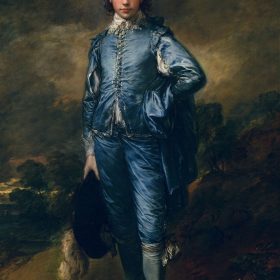
Artist: Thomas Gainsborough
Location: The Huntington Library, Art Museum, and Botanical Gardens
Created: 1770
Period: Rococo
“The Blue Boy” is a renowned painting by Thomas Gainsborough, depicting a young boy in aristocratic attire against a blue background.
3. The Embarkation for Cythera
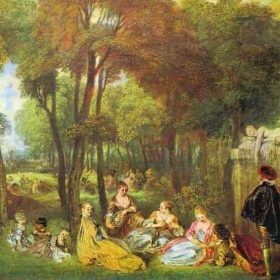
Artist: Jean-Antoine Watteau
Period: Rococo
Location: Louvre Museum
Created: 1717
“The Embarkation for Cythera”: Enchanting This painting depicting lovers departing for the mythical island of love.
4. The Triumph of Venus

Artist: François Boucher
Location: Nationalmuseum
Period: Rococo
Created: 1740
“The Triumph of Venus” depicts goddess’ victory, celebrating love, beauty, and allure, a cherished masterpiece in art history.
Top 5 Artists – Rococo
1. Jean Antoine Watteau

Born: 10 October 1684, Valenciennes, France
Died: 18 July 1721, Nogent-sur-Marne, France
Period: Rococo
Nationality: French
Jean Antoine Watteau, a renowned Rococo artist, transitioned art with his delicate brushwork and theatrical themes, paving the way for future painters.
2. Jean Honoré Fragonard

Born: 5 April 1732, Grasse, France
Died: 22 August 1806, Paris, France
Period: Rococo
Jean Honoré Fragonard, a Rococo artist, flourished during the 18th century, a different era from Keith Haring’s death in 1990.
3. François Boucher

Born: 29 September 1703, Paris, France
Died: 30 May 1770, Paris, France
Period: Rococo
François Boucher, a renowned French Rococo painter, was active during the 18th century, predating Keith Haring’s influential art movement.
4. Thomas Gainsborough
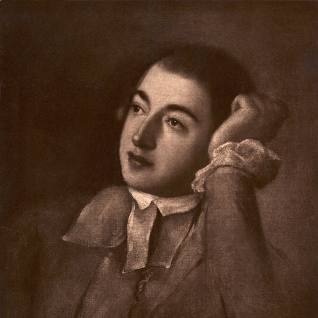
Born: 14 May 1727, Sudbury, United Kingdom
Died: 2 August 1788, London, United Kingdom
Period: Rococo, Romanticism
Thomas Gainsborough, a prominent artist of the 18th century, transitioned from portraiture to landscapes, leaving a lasting artistic legacy.
1. Jean Antoine Watteau
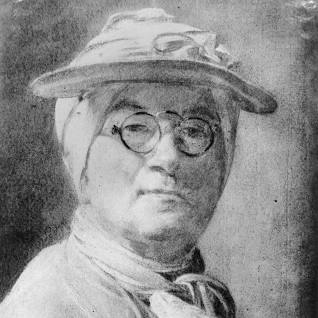
Born: 2 November 1699, Rue de Seine, Paris, France
Died: 6 December 1779, Louvre Museum, Paris, France
Period: Rococo, Baroque, Realism
Jean-Baptiste Siméon was a prominent figure in the art world, his work echoing the spirit of Keith Haring even after his death.
Characteristics
Also If you want to know the characteristics of Rococo along with Art nouveau, Arabesque, and Dada.
So here are two categories 1. (Medieval- Western World) and 2. (Renaissance- European) that explain the various aspects of this art movement.
First category “Medieval- Western World” explains the deepness of this art movement and,
Second category “Renaissance- European” describes the artistic aspect of this art movement.
There are very famous artworks such as – “The Swing,” “The Blue Boy,” “The Embarkation for Cythera.” If you observe the artworks of it, then you can easily guess the characteristics of it.
And also other paintings such as “The Triumph of Venus” and “Mr and Mrs Andrews” describe the characteristic of it.
Other art movements
- Land art
- Modernism
- Expressionism
Relation with other art movements
Rococo has been the part of art history, which artists such as Jean Antoine Watteau, Jean Honoré Fragonard, and François Boucher have contributed to a great extent to make it art movement.
Rococo has given many other renowned artists such as Thomas Gainsborough, Jean-Baptiste Siméon, etc. Rococo is an art movement of art lovers because it is a pastiche of many different art styles such as Dada, Arabesque, Art nouveau, etc.
In this article, you would get information about other art movements also such as;
- Dada
- Arabesque
- Art nouveau
If you (As a/an Rococo student) see the artworks of these art movements, specifically Dada and Arabesque, then definitely you would get small similarity.
Indeed, its is a pastiche of many art movements due to its artists.
This has a complicated history (Relation of artists of Rococo), and its specific and precise definition (Of Rococo) has been the subject of debate.
That’s because, in the realm of art, craft, and aesthetics, the definition of Rococo is different. But don’t worry; this website (artandcrafter.com– Jean Antoine Watteau + Rococo) has covered all aspects.
Rococo unique characteristics
Rococo, a distinctive artistic style flourishing in the 18th century, is characterized by a plethora of unique and captivating features. Transitioning from the grandeur of Baroque, Rococo embraced a more delicate and playful approach to art, marking a significant shift in aesthetics.
One of its key characteristics lies in the abundant use of pastel colors, evoking a sense of lightness and elegance. Transitioning smoothly from one hue to another, Rococo paintings exude a dreamlike quality, transporting viewers to a world of enchantment.
Moreover, Rococo art is renowned for its intricate ornamentation and lavish embellishments. Elaborate and delicate motifs, such as swirling acanthus leaves, cherubs, and floral garlands, adorned various works, adding a sense of opulence and charm.
The theme of love and romance often took center stage in Rococo art, representing a fascination with the joys of life. The depictions of tender courtship and idyllic pastoral scenes further contributed to the movement’s whimsical allure.
Rococo’s artistic expression extended beyond painting, influencing the design of furniture, fashion, and interior decor. Ornate furniture pieces, adorned with graceful curves and decorative carvings, became emblematic of the style’s sophistication.
Despite its widespread popularity, the Rococo movement faced criticism for its apparent frivolity and lack of depth. However, in contemporary discussions, the style is acknowledged as a vital chapter in art history that showcases the aesthetics and cultural preferences of its time.
In conclusion, Rococo’s unique characteristics, encompassing pastel colors, ornate embellishments, and romantic themes, created a spellbinding and refined artistic era. So just as influential artists like Keith Haring left their mark in the art world, Rococo too, with its distinctive flair, remains an essential part of the larger tapestry of art history.
Father of Rococo
Jean-Antoine Watteau (1684-1721) is widely recognized as the father of Rococo, having played a pivotal role in shaping its early development during the early 18th century. His innovative artistic approach and unique vision laid the foundation for the defining characteristics of its style.
Watteau was renowned for his exquisite paintings that captured elegant and romantic scenes of aristocratic life, leisurely pursuits, and pastoral landscapes. His works often portrayed graceful figures donning flowing garments set against dreamy backgrounds, exemplifying the delicate and lighthearted essence that would become synonymous with it.
One of his most significant contributions was the introduction of the fête galante genre, which depicted outdoor social gatherings of the French upper class. This genre infused his compositions with a sense of playfulness and elegance, further enhancing the its style’s appeal. Watteau’s masterful use of color, light, and the portrayal of emotions left an indelible mark on the its style, serving as an inspiration for numerous artists and craftsmen throughout Europe.
Despite his untimely death at the age of 36, Watteau’s influence on the art world was profound. His innovative techniques and emphasis on intimate, tender themes laid the groundwork for the flourishing of the its style, cementing his legacy as the acknowledged father of this ornate and enchanting artistic movement.
Criticism of Rococo
The Rococo style, though celebrated for its exuberance, faced its fair share of criticism throughout history. Also transitioning from the more serious and grandiose Baroque era, Rococo’s emphasis on frivolity, ornate decoration, and indulgent themes drew disapproval from certain circles. Detractors argued that the movement lacked substance and depth, overshadowed by its preoccupation with the pleasures of life and the pursuit of beauty.
In the 18th century, Enlightenment thinkers were among the most vocal critics of Rococo. Also they viewed it as a decadent and superficial art form that failed to address pressing societal issues or provoke intellectual engagement. Rococo’s fanciful aesthetics clashed with the rationalism and enlightenment ideals of the time, leading to harsh critiques of its relevance.
As the Rococo style evolved, so did the criticisms. By the 19th century, the rising tide of Romanticism further marginalized Rococo, considering it a frivolous product of a bygone era. Romantic artists and critics sought deeper emotional expression and explored more profound human experiences, dismissing the Rococo’s light-heartedness as a mere escapism.
Moreover, in the contemporary art world, the Rococo style continues to attract both admiration and critique. While some embrace its delicate charm and intricate beauty, others argue that it lacks the political and social relevance demanded by more contemporary artistic movements. Keith Haring’s death, a prominent artist known for his activism and social engagement, serves as a stark contrast to the perceived superficiality of Rococo, further fueling the debate surrounding artistic purpose and impact.
Despite the criticisms, the Rococo style retains its place in art history as a whimsical and elegant chapter that reflects the tastes and sensibilities of its time. So its enduring allure continues to inspire artists and art enthusiasts alike, serving as a reminder of the ever-evolving nature of artistic expression.


